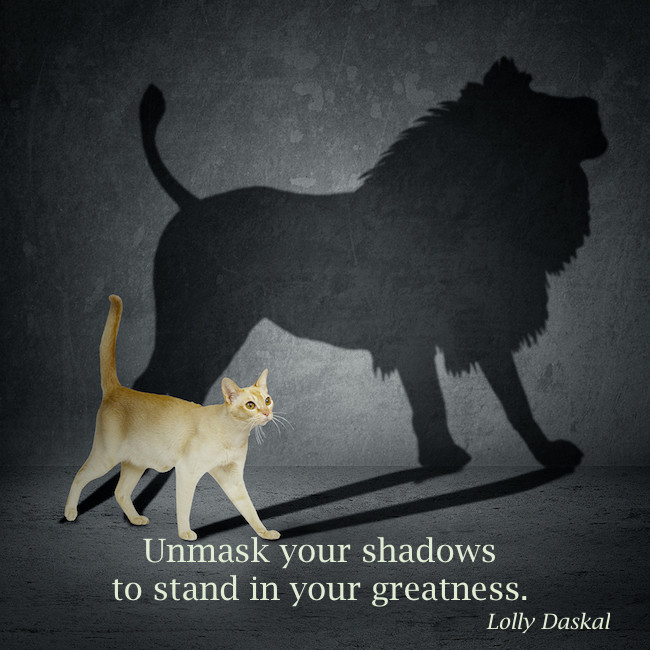 Once you’ve been in a leadership role for awhile, you develop a leadership style that is comfortable. You begin to relax in that role, feeling you are at the top of the learning curve and confident that you know how to be a leader.
Once you’ve been in a leadership role for awhile, you develop a leadership style that is comfortable. You begin to relax in that role, feeling you are at the top of the learning curve and confident that you know how to be a leader.
Beware! This is the slipperiest spot on the slope. You can get lulled into a complacency that will eventually be your undoing.
I recently had the opportunity to talk with Lolly Daskal, executive coach and author of the new book The Leadership Gap. According to Lolly, “A problem that all high performers face sooner or later is that what once worked to propel their rise stops working. The very same traits that once worked for them start to work against them.”
When you overuse a strength, you tap into its shadow. – Lolly Daskal
Carl Jung is famous for formulating the concept of the shadow, the aspects of our personality we hold in the darkness of our unconscious. Our shadows are what we refuse to acknowledge about ourselves – the parts of ourselves we’re not proud of, the thoughts and feelings we don’t want others to know about . . . that we ourselves don’t want to know about.
“Unfortunately there can be no doubt that man is, on the whole, less good than he imagines himself or wants to be. Everyone carries a shadow, and the less [aware of it he is], the blacker and denser it is.” (Carl Jung, Wikipedia)
Unexamined and unacknowledged, your shadow exerts unconscious control over your thoughts, emotions, choices, and actions. “It forms an unconscious snag, thwarting our most well-meant intentions,” according to Jung. “That which we do not bring to consciousness appears in our lives as fate.”
Your Shadow Side of Leadership
“All of us try to do good work. We don’t show up at work and say we want to be deceivers or manipulators,” says Lolly Daskal. What happens is our shadow gets triggered, often without even realizing it. Our shadows make us feel unworthy, and we take action to cover them up.
According to Jung, often we project the problems we created through our shadow outward onto others, blaming them for the very thing we are responsible for.
Unmask your shadows to take away their power over you. – Lolly Daskal
According to Lolly Daskal, “our shadows mask our greatness and don’t allow us to stand in the light.”
Embracing your shadows can be a huge relief. You don’t have to pretend to always know the answer, or always be competent, or always be compassionate, or always be happy. You can stop propping up whatever false image you are trying to project.
You can acknowledge your “darker” side without being afraid of it. It doesn’t mean you will start acting out your dark side. Just because you have a feeling or a desire, doesn’t mean you need to take action on it. Adults have the ability to make rational decisions about what they will say or do.
Begin by acknowledging the parts of your personality you want to hide or keep secret. When you begin to feel fear, shame, or unworthiness, don’t push those feelings away immediately. Take a moment to consider what they are keeping you from seeing, thinking or doing.
When you acknowledge your shadows, you become more humane, more approachable, and more connected.
You are better prepared to grapple with the reality that life is not “all or nothing.” You end up with true humility.
. . . These are the key ingredients to being a truly great leader.
 This post is inspired by my friend and colleague Lolly Daskal’s brillant new book The Leadership Gap: What Gets Between You and Your Greatness. Lolly explains the seven archetypes of leadership and the risk to greatness that lurks in the shadow of each. And she provides real-life examples of leaders who embody these archetypes. I read it, I love it, I recommend it!
This post is inspired by my friend and colleague Lolly Daskal’s brillant new book The Leadership Gap: What Gets Between You and Your Greatness. Lolly explains the seven archetypes of leadership and the risk to greatness that lurks in the shadow of each. And she provides real-life examples of leaders who embody these archetypes. I read it, I love it, I recommend it!
Visit www.LollyDaskal.com to learn more about Lolly and her work. You can order a copy of The Leadership Gap at Amazon or anywhere books are sold.













Reminded of Patricia Shaw’s excellent article on working in the shadow side of orgs to influence change:
http://www.dialogicod.net/academic_papers/Shaw_1997.pdf
It’s a fascinating subject. Thanks for the article link, Bruce.
Bruce, Thanks for sharing the fantastic article.
Thank you for the insightful article on Leadership and Shadows. As one of my mentors always said, “Within your abyss that is where you find your treasures.” – Joseph Campbell. I hope your article will enlighten others, that even though they have shadows, there are treasures always to be found. Lolly
Thanks for your wisdom, Lolly, and for the opportunity to learn more.
How would you handle those “leaders” who are clueless about their behavior- the shadow is so deep that it becomes a literal blind spot? I believe finding and owning shadows works only in leaders who are unafraid of the truth. Sadly, there are some so-called “leaders” who will do anything to keep the shadow. Mental stability and personal courage, unfortunately, are prerequisites for holding a leadership slot.
Lolly shares a great example of what you’re talking about in her book. That leader’s ego kept him from accepting the help he needed, and he eventually lost his position with the company.
Great observation. Some people are truly unaware of their effect on others. It makes them quite challenging to be around. Then there are those who are aware but, like you suggest, Eileen, are unwilling to face their personal demons. I imagine the effort of trying to hide them away from the world is not an easy task either. Finding a way to relinquish “the shadow’s” control over us would be a terrifying and liberating at the same time. I find the leaders who are honest about their flaws are the ones who inspire me the most. Self-awareness is so important to becoming a truly enlightened human being.
Every leader has a choice!
To stand in their greatness or lead from their gaps.
If a leader chooses greatness they must learn to work on their gaps– if a leader chooses to lead from their gaps – there are consequences example (loose their job, top people leave…review is impacted, targets are not met…etc…)
This book sounds intriguing, although quite deep. Thank you for sharing the overview.
The book is a fun, easy read and fascinating, Jane. It’s organized around the 7 archetypes, and provides lots of relevant examples. So glad you enjoyed my post. Thanks so much for your comments!
This book takes a complicated subject and simplifies it in a way that it can be applied to your life and leadership.
In its complexity I made it simple
Interesting application of Jungian psychology. Good stuff!
Jung is my mentor and teacher.
Thanks for recognizing his wisdom in this important subject of leadership.
One of the ways to compensate for your shadow is to hire people who have the technical and emotional skills that you don’t have. Leading a truly diverse work group is hard work, but it’s better for the organization.
One of the ways I teach in the book on how to compensate for your shadows is to leverage the gaps/your shadows.
Because at the end of the day we cannot hide from our shadows because what we hide – ends up owning us.
This looks an excellent resource, you have provided a great taster…will the book be available in the UK
My publisher said, that the book is available right now at amazon uk.